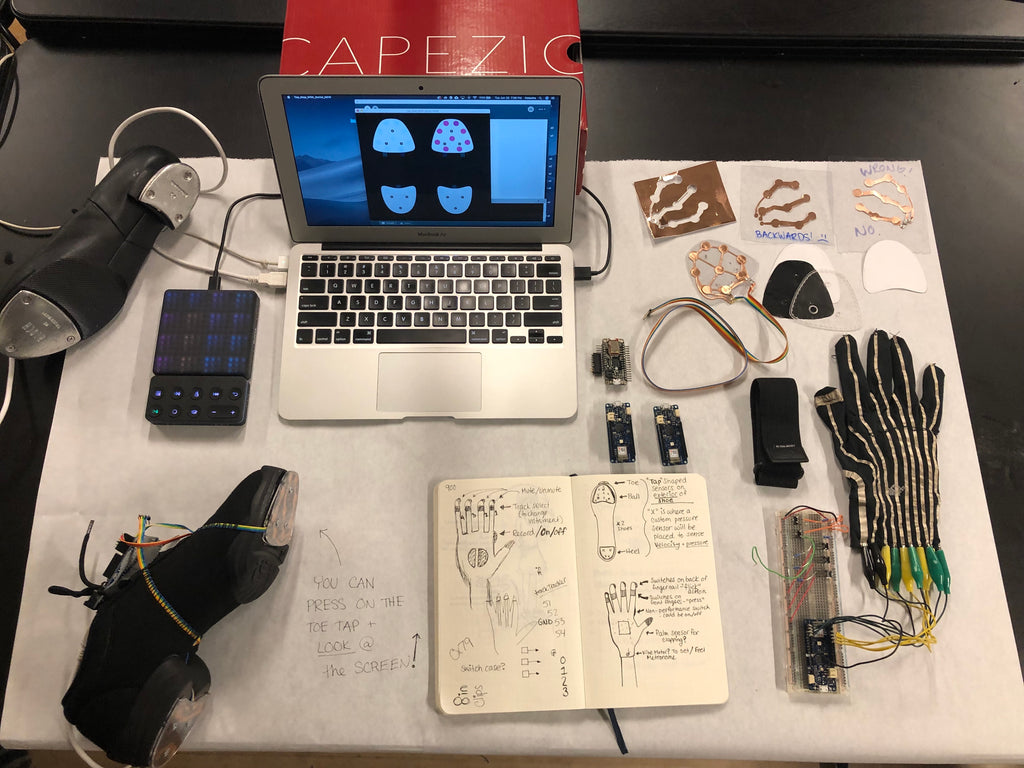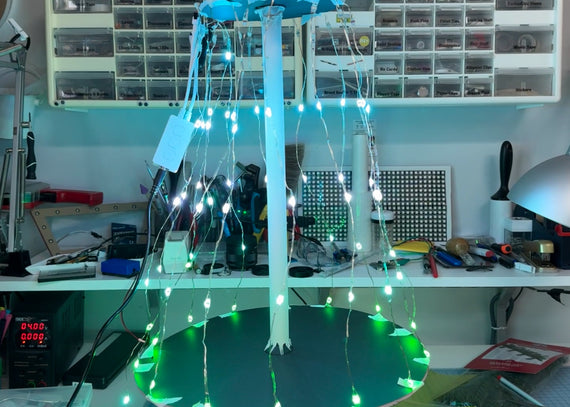Microcontrollers
Arduino MKR WiFi 1010
It connects easily to other Arduino products and is configurable using Arduino software — and you don’t need to be a network expert. This is the newest version of the MKR 1000 WIFI, but with an ESP32 module on board made by U-BLOX.
Arduino Nano 33 BLE
This allows the design of wearable devices and movement sensing projects that need to communicate to other devices at a close range. Arduino NANO 33 BLE is also ideal for automation projects thanks to the multiprotocol BT 5.0 radio.
BlueFruit LE
- 3.3V regulator with 500mA peak current output
- USB native support, comes with USB bootloader and serial port debugging
- You also get tons of pins - 20 GPIO pins
- Hardware Serial, hardware I2C, hardware SPI support
- 7 x PWM pins
- 10 x analog inputs
- Built in 100mA lipoly charger with charging status indicator LED
The Feather will automatically switch over to USB power when its available.
We also tied the battery thru a divider to an analog pin, so you can measure and monitor the battery voltage to detect when you need a recharge.
Thanks to an easy to learn AT command set, you have full control over how the device behaves, including the ability to define and manipulate your own GATT Services and Characteristics, or change the way that the device advertises itself for other Bluetooth Low Energy devices to see. You can also use the AT commands to query the die temperature, check the battery voltage, and more, check the connection RSSI or MAC address, and tons more.
o make this easy we stuck a double-100K resistor divider on the BAT pin, and connected it to D9 (a.k.a analog #9 A9). You can read this pin's voltage, then double it, to get the battery voltage.
#define VBATPIN A9
float measuredvbat = analogRead(VBATPIN);
measuredvbat *= 2; // we divided by 2, so multiply back
measuredvbat *= 3.3; // Multiply by 3.3V, our reference voltage
measuredvbat /= 1024; // convert to voltage
Serial.print("VBat: " ); Serial.println(measuredvbat);
Midi / Sequencer / Looper & Music Code Resources
From Roli: "What is a multi-timbral instrument? A multi-timbral instrument A multi-timbral instrument can produce sounds on multiple channels at once. A multi-timbral instrument is often used to perform several instruments simultaneously, such as on a workstation keyboard which plays ensemble arrangements. For example, Channel 1 might be a piano, Channel 2 a guitar, Channel 3 a bass, etc.
A mono-timbral instrument A mono-timbral instrument produces one timbre on a single channel only. Playing the Seaboard through a mono-timbral instrument means that the conflicting pitch bend and aftertouch data intended for individual notes would instead be applied equally to all notes.
Why does the Seaboard need a multi-timbral instrument? Channel-wide messages like pitch bend or MIDI CCs are applied equally to all notes on that channel. The Seaboard uses the multiple channels of a multi-timbral instrument by assigning each new note to an individual channel so that each can have its own pitch bend and CC messages. See more details here.
Equator is a multi-timbral instrument which has been designed for the Seaboard. Instead of containing different instruments on each MIDI channel, it contains identical instruments on each channel but allows complete polyphonic expression of pitch bend and other controllers.
Is multi-timbral the same as polyphonic? It’s easy to confuse ‘multi-timbral’ with ‘polyphonic’. Polyphonic instruments play several notes on a single channel. The Seaboard uses a multi-timbral instrument to play single notes on each channel, across multiple channels. This means that the Seaboard's polyphony is decided by the number of channels it uses, which can be set in ROLI Dashboard."
ROLI Lightpad Block
4 instrument looper
- Drums
- Bass
- Chords
- Lead
Record / Stop
Saves loops to select later
Records whole song



